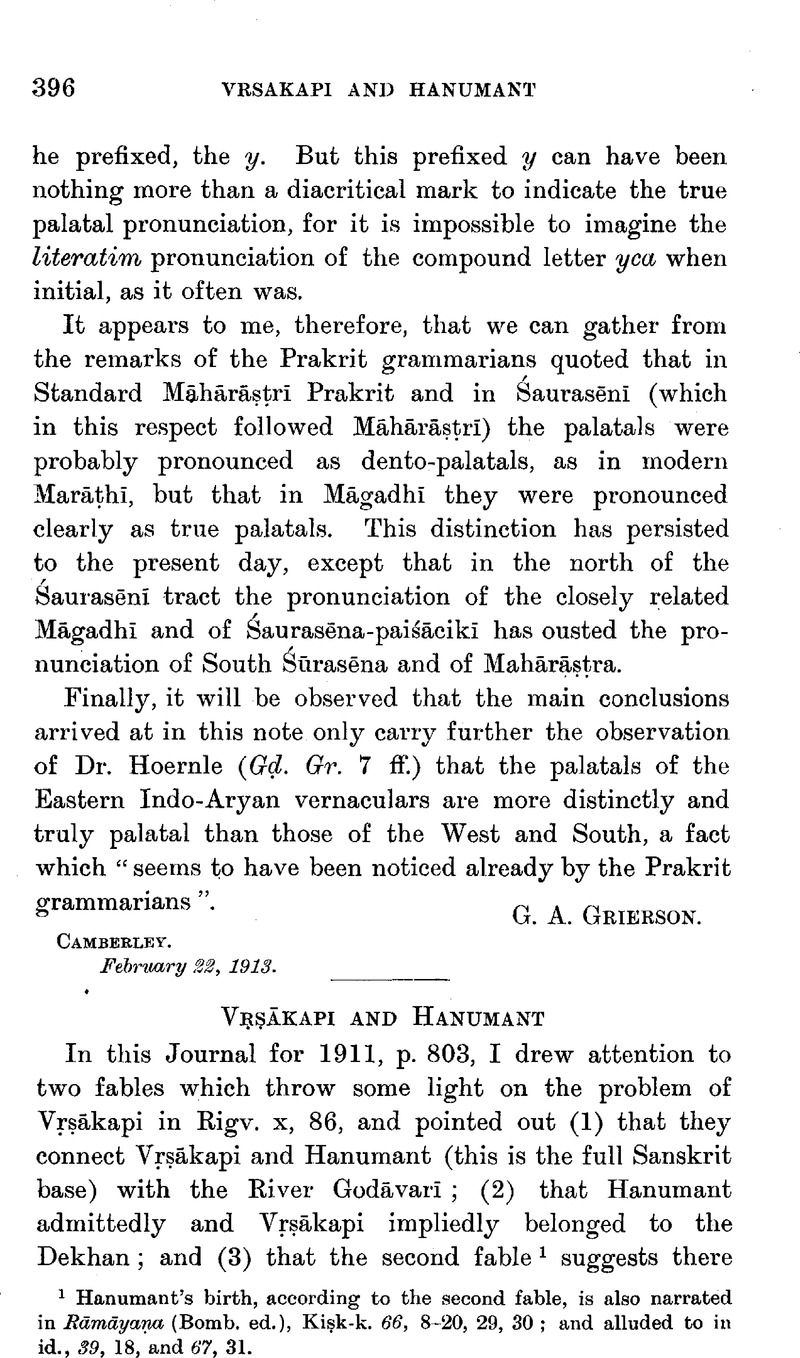No CrossRef data available.

page 396 note 1 Hanumant's birth, according to the second fable, is also narrated in Rāmāyaṇa (Bomb, ed.), Kiṣk-k. 66, 8–20, 29, 30; and alluded to in id., 39, 18, and 67, 31.
page 397 note 1 It is explained by a fable to mean “having the left jaw broken” (id., 66, 24).
page 398 note 1 This strange difference in meaning is not noticed by Caldwell, and is worth investigation, and it may perhaps have some relation to the description of the forest tribes as monkeys in the Rāmāyaṇa. There is a closely similar word meaning “flock, herd” in Dravidian, Tel. manda, Kan. mande, mandi, Tam. mandei (but not in Malayalam), and it is a question whether the two sets of words are allied or not.
page 398 note 2 Caldwell says that Tamil is “in many respects the representative language of the family”, and “contains the largest portion and the richest variety of indubitably ancient forms”: Dravidian Grammar, Introd., pp. 1, 9.Google Scholar
page 398 note 3 I have consulted Mr. Wickremasinghe about these Dravidian words, and, while he naturally reserves his opinion on such difficult points, he yet perceives at present no material prima facie objection to my suggestions. Hence I have ventured to put them forward.
page 399 note 1 I would suggest that an example appears in the names Hiḍimba (a Rākṣasa killed by Bhīma) and Hiḍimbā (his sister); MBh. i, 152, 5927 ff., and 153, 5962 ff. These are not Sanskrit and are presumably non-Aryan names Sanskritized. Tamil has the words iḍumbu (and iḍimbu), “haughtiness, audacity, oppression”; idumbei, “pride”; iḍumbar, “haughty persons”; and iḍumbi, “haughty woman.” Mala-yalam has iḍaṅṅu, “oppression,” and Telugu iḍumu, “trouble, hardship.” These words are thoroughly at home in Dravidian, and appear to be derived from a root iḍi (found in all four languages), “to pound, crush, shatter,” whence follow the ideas of “oppression” and “high-handedness”. Hiḍimba therefore seems to be Dravidian with h prefixed, and to mean “shatterer” or “haughty”. These names return from Sanskrit to Tamil literature as Iḍumba-n (n being the masc. termination) and Iḍumbi, with the probably original u restored. The same word, with the initial vowel dropped, appears probably in the name Ḍimbha + ka, slightly modified by folk etymology: MBh. ii, 21, 886; Hariv. 295, 15404. Tamil has no h.
page 399 note 2 Tamil has borrowed from Sanskrit hanu as anu and aṉu, and Hanumant as Aṉumamda-n. When borrowing true Sanskrit words ending in the suffix -mant it adopted them, not in that shape, but in their nom. form -mān; thus, srīmant as śīmān, aṁśumant as añjumān, nītimant as nīdimān. But Hanumant appears as Aṉnmanda-n and not Aṉumān. Was this due to a reminiscence that the final mant was not really a suffix?
page 399 note 3 Such expressions in the hymn as harito mṛgaḥ (verse 3) and pulvagho mṛgaḥ (verse 22) can be understood in their natural meaning, and I suggest that the commentators have sought to cloak Vṛṣākapi's true nature.